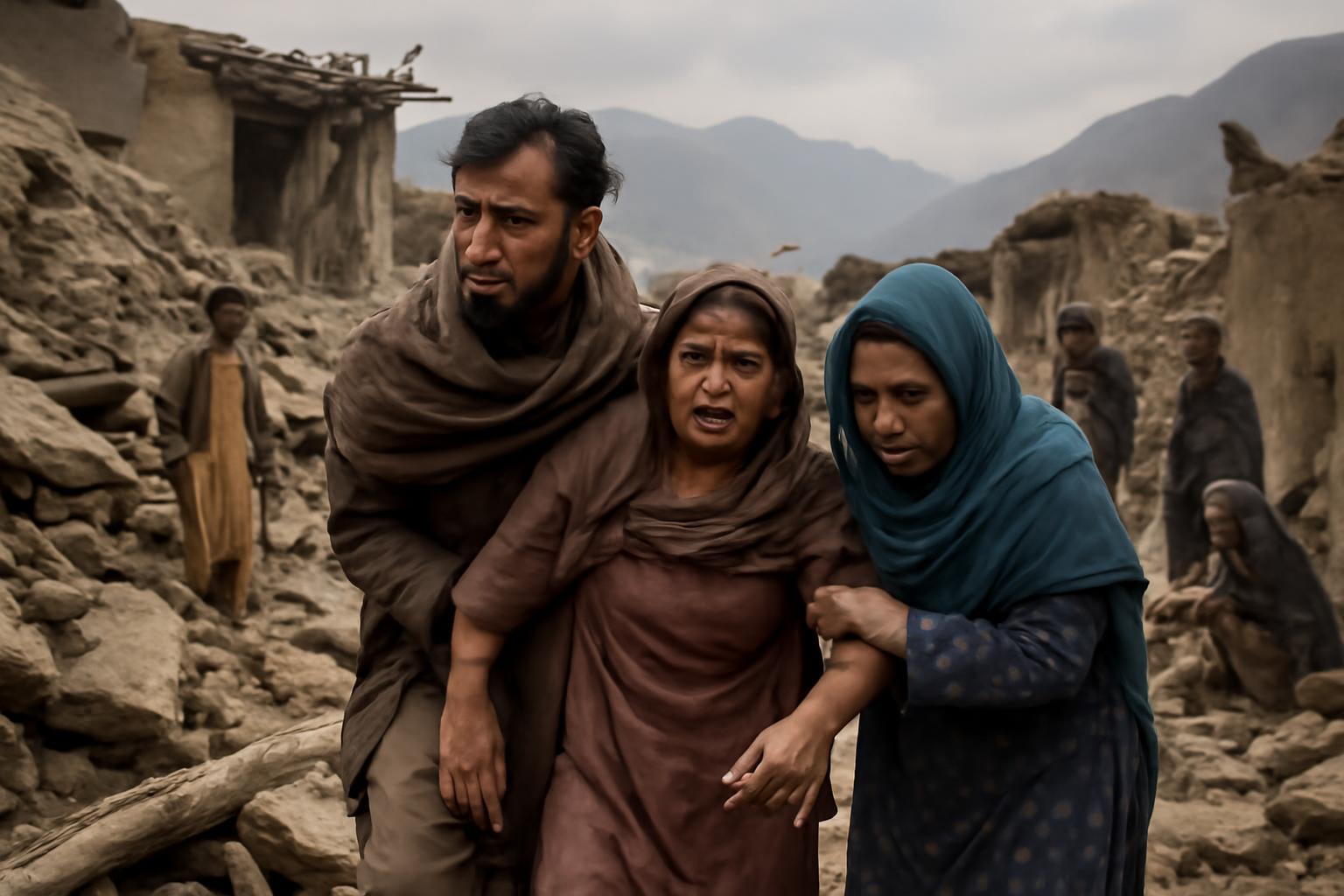An earthquake of magnitude 6.0 struck Afghanistan just before midnight, with the hardest-hit area the Kunar region near the Pakistan border. The Taliban say at least 800 people were killed and thousands injured, and the toll is expected to rise as many areas remain unreachable. In Jalalabad, overwhelmed hospitals treat victims such as a 16-year-old boy, Shahidullah, whose mother died in the disaster and whose sister is also injured. Survivors were flown in by helicopters from remote villages, but the sheer number of injured surpasses local capacity. The region is remote and often without power, and floods over the weekend have further blocked roads, complicating rescue efforts amid difficult terrain and bad weather. The Taliban government has appealed for international help, and aid is beginning to arrive: India has sent 1,000 family tents and food to Kabul, with China and the UK also pledging assistance. The WHO is sending medicines and medical personnel, while German NGOs such as Diakonie Katastrophenhilfe and Caritas International are providing funds. Nevertheless, it is likely to take days for relief to reach the most affected villages.
In such moments the practical truth that eludes the comfortable planning rooms is laid bare: a society’s ability to relieve suffering does not reside in one orchestra conducted by a single maestro, but in a multitude of local voices, dispersed knowledge, and voluntary acts that weave together in the absence of perfect central direction. The disaster tests not only endurance but the way a people organize itself when the map of power is crowded, uncertain, and rapidly shifting. The Taliban’s appeal for aid and the arrival of tents, medicines, and funds from abroad reveal a necessary, if imperfect, collaboration across borders and institutions. Yet the same scene also exposes the stubborn limits of centralized authority under strain—communications frayed, logistics impeded by terrain and weather, roads rendered useless by floods, and the moral hazard of politicized administration in a country where legitimacy is contested and expertise often scarce.
What humanity most needs at such moments is not a grand plan hung on a blackboard, but a network of capable, decentralized responses: local hospitals operating with as much autonomy as possible, community coordinators who know who needs what where, NGOs and private charities able to move quickly without being choked by red tape, and international partners who respect local conditions while supplying the means to respond. Prices and markets do not replace compassion, but they do reveal needs and align scarce resources with urgent demand through voluntary exchange, faster information, and better incentives to innovate under pressure. The relief effort will only gain speed as multiple centers of action—civil society, humanitarian groups, philanthropic donors, and regional actors—coordinate rather than pretend to replace one another.
The deeper lesson for a free society is this: resilience arises where freedom permits diverse, adaptive responses to emerge and to learning from trial and error to improve future performance. In places where the rule of law is fragile and authority is centralized without accountability, aid flows and effective relief become hostage to bureaucratic inertia and political concern. If we take the catastrophe as a teacher, it speaks in favor of nourishing autonomous civil society structures, maintaining predictable rules that enable cooperation across borders, and safeguarding the dispersed knowledge that only communities themselves possess. The measure of civilizational strength will be how swiftly and surely such disaster-ridden regions, with all their fragility, can mobilize the networks of voluntary aid, selective, informed, and locally led, that steady the human spirit when the earth itself seems to churn beneath our feet.
